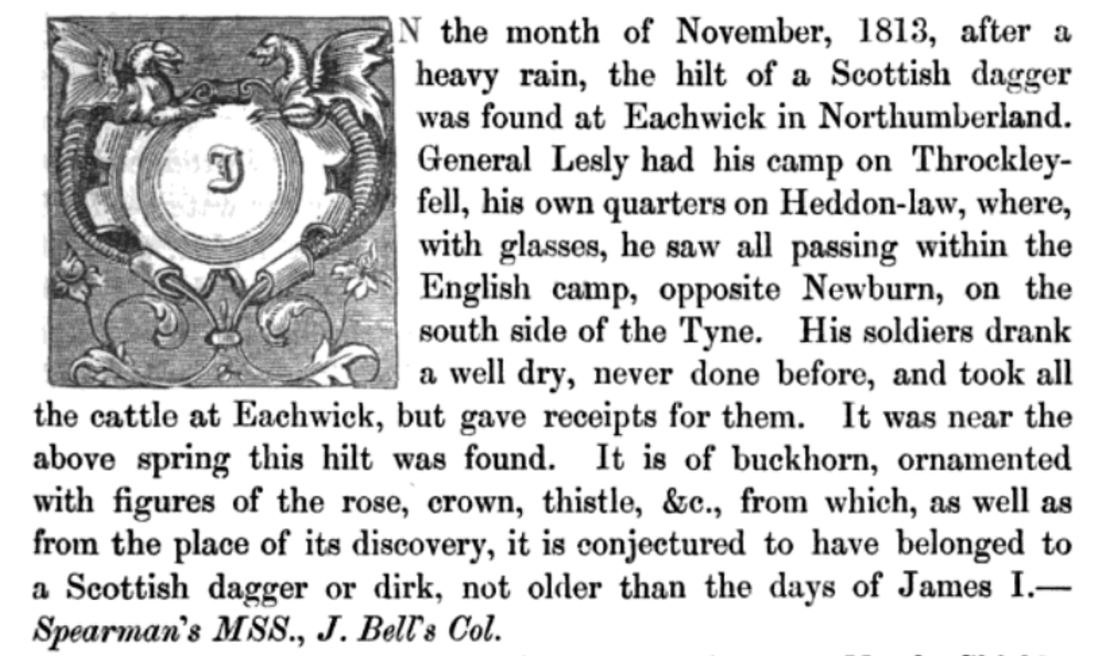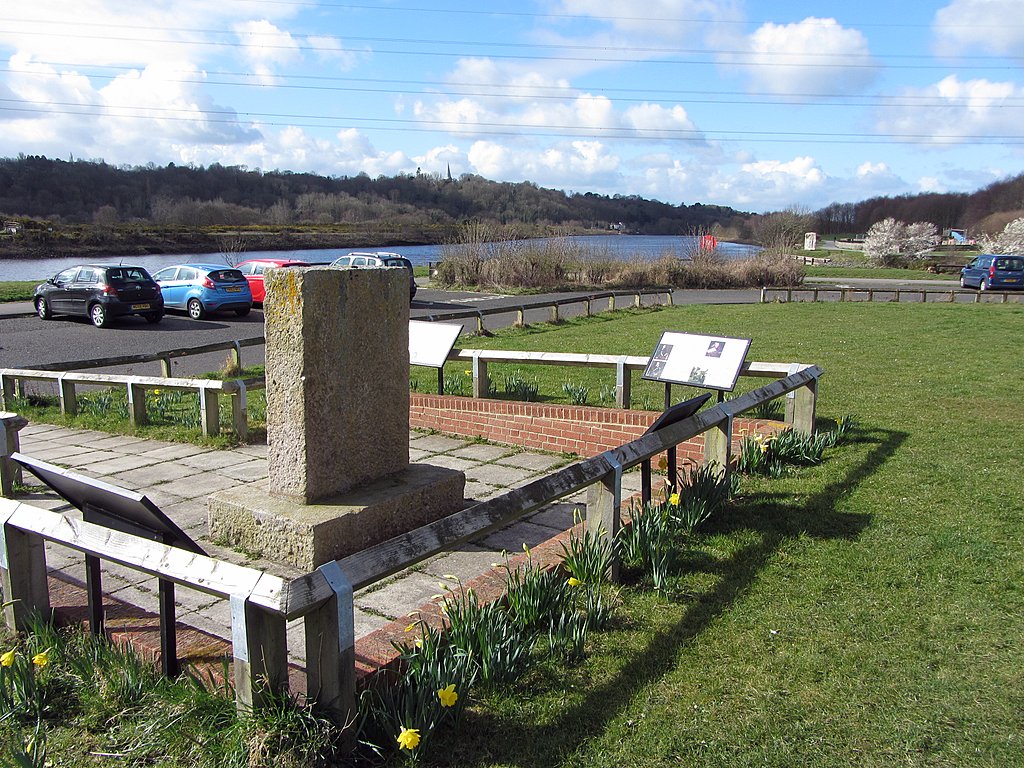On the 6th, Lesley brought his heavy ordnance by sea to Blythsnook, from whence they were dragged up to the camp. The Scots remained before Newcastle till the 22d of February, without gaining any material advantage, and determining to waste no more time before the place, they left only six regiments of foot and some troops of horse, on the north side of the town to observe the garrison, and marched on that day with the gross of the army to Heddon-on-the-Wall, where they lay all night in the open field.
|
The Local Historian's Table Book: Of Remarkable Occurrences, Historical Facts, Traditions ... Connected with the Counties of Newcastle-upon-Tyne, Northumberland and Durham. Moses Aaron Richardson (1843). Volume 3, Chapter 6, p.129. In 1640, the Scottish army, consisting of 20,000 foot and 2500 horse, crossed the Borders, under the command of Lesley, a soldier of experience and abilities. Having marched through Northumberland without encountering any opposition, they encamped on the 27th of August upon Heddon Law. The king's army [King Charles I] was commanded by the Earl of Northumberland, and consisted of 10,000 foot and 2000 horse. A detachment of 3000 foot and 1500 horse, under Lord Conway, was stationed at Stella Haugh, and protected by two breast-works and four pieces of cannon. On the following day, hostilities commenced. The Scottish cannonade drove the English from both their sconces; while a battery of nine cannon, which Lesley had raised on a hill to the east of Newburn, threw the king's horse into disorder. It being now near low water, the Presbyterian general seized this favourable juncture to order a body of horse and two regiments of foot to pass the river. The infantry, in a panic, fled up Ryton and Stella banks, while the horse that covered the retreat, after a short encounter, were dispersed; and the English suffered what Lord Clarendon emphatically called "an infamous and irreparable rout." It is easy to confuse this Battle of Newburn and the occupation of Newcastle with a repeat encounter which led to the Siege of Newcastle. That took place in 1644. At stake was always the prize of controlling the coal trade from the Tyne. In 1640 the Newcastle corporation had to pay £38,888 to the Scots. This won them no friends and when on 20 June 1642 the king appointed a governor and erected batteries to guard the Tyne, no-one of consequence complained on Tyneside although Parliament was alarmed. Newcastle became a royalist city in the English civil war. Newburn was used as a bridging point by Scottish forces in 1644.[ In the autumn of 1644 was fought one of the most sustained and desperate sieges of the First Civil War when Scottish Covenanter forces under the Earl of Leven finally stormed Newcastle-upon-Tyne, the King's greatest bastion in the north-east and the key to his power there. The city had been resolutely defended throughout the year by the Marquis of Newcastle, who had defied both the Covenanters and northern Parliamentarians. Newcastle had held sway in the north-east since the outbreak of the war in 1642. He had defeated the Fairfaxes at Adwalton Moor and secured the City of Newcastle as the major coal exporter and port of entry for vital Royalist munitions and supply. Without this the north was lost. If anything, Newcastle was more important, in strategic terms, than York and it was the city's fall in October which marked the final demise of Royalist domination of the north. The Great Siege of Newcastle, 1644 by Rosie Serdiville. The History Press (2001).
0 Comments
Your comment will be posted after it is approved.
Leave a Reply. |
AuthorAndy Curtis Archives
April 2024
Categories
All
|




 RSS Feed
RSS Feed
